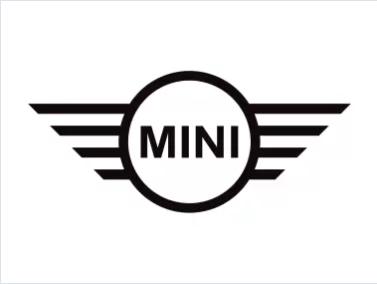Auto Ignition Repair: Ensuring Your Vehicle Starts Every Time
The ignition system of an automobile is vital for its operation, serving as the main gateway to ensuring that the engine begins effectively. Problems with an auto ignition system can lead to discouraging scenarios where a lorry refuses to begin or begin sporadically. Comprehending how to repair ignition issues not just conserves time however can also prevent considerable costs in the future. This short article dives into what auto ignition systems are, how they work, common concerns, and vital repair techniques.
Understanding How Auto Ignition Systems Work
The auto ignition system is an assembly of elements that generates the stimulate needed to fire up the air-fuel mixture in the engine's cylinders. Here's a streamlined breakdown of its main parts:
- Ignition Coil: Transforms the battery's low voltage to a high voltage.
- Supplier (in older systems): Directs the high voltage to the correct cylinder.
- Ignition Module: Controls the timing of the stimulate.
- Spark Plug: Fires to ignite the air-fuel mix.
- Crankshaft Position Sensor: Provides details about the position of the engine's crankshaft to the ignition module.
Table 1: Key Components of an Auto Ignition System
| Element | Function |
|---|---|
| Ignition Coil | Increases battery voltage for the trigger |
| Supplier | Coordinates spark circulation to the cylinders |
| Ignition Module | Regulates timing and sequence of sparks |
| Trigger Plug | Fires up the fuel-air mix |
| Crankshaft Position Sensor | Screens crankshaft position for timing |
Common Auto Ignition Problems
Auto ignition problems can stem from various sources, each requiring an unique method to repair. Below are some common problems:
- Dead Battery: A battery that can not hold charge will avoid the lorry from starting.
- Faulty Ignition Switch: A malfunctioning switch can interrupt the whole ignition process.
- Used Spark Plugs: Damaged plugs can trigger misfiring and difficulty beginning.
- Broken Ignition Coil: Without proper voltage generation, the trigger plugs can not fire.
Table 2: Common Ignition Troubles and Their Symptoms
| Issue | Signs |
|---|---|
| Dead Battery | No dashboard lights, nothing happens when turning the key |
| Faulty Ignition Switch | Ignition light flickers, problem in turning key |
| Worn Spark Plugs | Engine misfire, bad fuel effectiveness, hard to begin |
| Broken Ignition Coil | Engine cranks however fails to start, backfiring |
How to Diagnose Auto Ignition Issues
Detecting auto ignition issues frequently involves a systematic assessment of the system's parts. Here's a basic method:
- Check the Battery: Ensure it's charged and the terminals are clean.
- Inspect the Ignition Switch: Make sure it's functioning which all connections are strong.
- Examine Spark Plugs: Remove and examine for wear; replace if required.
- Check the Ignition Coil: Use a multimeter to inspect for voltage output.
- Evaluate Wiring Connections: Look for any torn or detached wires that might impact the system.
Actions for Checking Key Ignition Components
- Battery: Use a multimeter to determine voltage.
- Spark Plugs: Remove and look for wear; consider replacing if damaged.
- Ignition Coil: Measure main and secondary resistance based on the maker's specs.
Auto Ignition Repair Solutions
After detecting the problem, the repair process usually includes dealing with the identified concerns. Here's a succinct list of services:
- Replace the Battery: If the battery is dead, replacing it is the simplest solution.
- Repair or Replace the Ignition Switch: If defective, consider replacing the switch to bring back performance.
- Change Spark Plugs: Replace worn or damaged trigger plugs with brand-new ones.
- Replace or Repair the Ignition Coil: If it stops working, a replacement is needed.
- Fix Electrical Wiring: Repairing or replacing damaged wires, adapters, or components.
Common Tools Needed for DIY Ignition Repair
- Multimeter: For electrical testing
- Socket Set: For removing ignition components
- Screwdriver Set: For numerous screws and adapters
- Wrench Set: For securing parts
Frequently Asked Questions (FAQs)
Q1: Can I repair the ignition system myself?A1: Yes, many ignition problems can be identified and fixed with basic mechanical skills and tools. However, complicated concerns might need expert help. Q2: How can I avoid ignition problems?A2: Regular upkeep,consisting of battery checks, trigger plug evaluations, and making sure electrical connections are safe and secure, can prevent ignition system concerns. Q3: What are some indications of a bad ignition coil?A3: Common indications include engine misfires, trouble starting,
backfiring, and decreased power. Q4: Is it costly
to repair ignition issues?A4: Costs differ significantly based on the nature of the issue, where labor and part prices
vary depending upon your area. Comprehending Ignition Switch Repair Cost and function of your automobile's ignition system is necessary for preserving a trustworthy and efficiently running automobile. By staying alert to
typical problems, taking part in routine maintenance, and knowing how to carry out standard repairs, lorry owners can make sure that their cars and trucks are constantly all set to hit the road. Auto ignition repair doesn't need to be a difficult job; with proper knowledge and the right tools, many problems can be solved efficiently and efficiently. In the journey to guarantee your car begins every time, knowledge really is power. Whether opting for self-repair or looking for professional repairs, awareness of your ignition system is key to a smooth ride.

